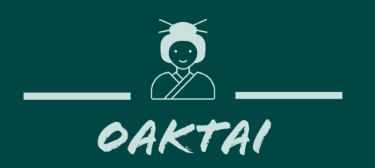In Japan, counting and numbers have a cultural significance that goes beyond simple arithmetic. The Japanese language has a unique counting system that has evolved over centuries and reflects the country’s history and culture.
One of the most distinctive features of counting in Japanese is the use of different counting systems depending on the object being counted. For example, there are different words for counting flat objects, long thin objects, small animals, and large animals.
The traditional Japanese counting system, known as the wago system, is based on the Chinese numerals system. In this system, numbers are represented by characters that are derived from Chinese characters. These characters are combined to form larger numbers.
In addition to the wago system, Japan also uses the sino-Japanese numerals system, which is based on the Chinese numerals system but with variations in pronunciation and writing. This system is commonly used for counting money, telling time, and dates.
Another unique aspect of Japanese numbers is that some numbers are considered lucky or unlucky. For example, the number four (shi) is considered unlucky because it sounds similar to the word for death. In contrast, the number nine (ku) is considered lucky because it sounds similar to the word for “long life” or “eternity.”
Japanese numbers also feature prominently in traditional Japanese arts, such as calligraphy and painting. For example, the number three is often seen as representing balance and harmony, and is often used in compositions and designs.
In summary, counting and numbers are an integral part of Japanese language and culture. Understanding the intricacies of counting in Japanese can give a glimpse into the rich history and traditions of this fascinating country.
Flat Objects
一枚 (いちまい) – ichi-mai
二枚 (にまい) – ni-mai
三枚 (さんまい) – san-mai
四枚 (しまい) – shi-mai
五枚 (ごまい) – go-mai
六枚 (ろくまい) – rokumai
七枚 (しちまい) – shichimai (or nana-mai)
八枚 (はちまい) – hachimai
九枚 (きゅうまい) – kyuu-mai
十枚 (じゅうまい) – juu-mai
Long, Thin Objects
一本 (いっぽん) – ippon
二本 (にほん) – nihon
三本 (さんぼん) – sanbon
四本 (よんほん) – yonhon
五本 (ごほん) – gohon
六本 (ろっぽん) – roppon
七本 (しちほん) – shichihon (or nanahon)
八本 (はっぽん) – happon
九本 (きゅうほん) – kyuuhon
十本 (じゅっぽん) – juppon
Small, Round Objects
一個 (いっこ) – ikko
二個 (にこ) – niko
三個 (さんこ) – sanko
四個 (よんこ) – yonko
五個 (ごこ) – goko
六個 (ろっこ) – rokuko
七個 (しちこ) – shichiko (or nanako)
八個 (はっこ) – hakko
九個 (きゅうこ) – kyuuko
十個 (じゅっこ) – jukko
Japanese counters for numbers.
Why does using different counters for different objects make sense? The answer is because it can help give context to your request. For example, in Japanese, you could say “maguro nigiri nihon onegaishimasu” for “two pieces of tuna sushi on one plate” and “maguro nigiri nimai onegaishimasu” for “two plates of tuna sushi, each with two pieces”.
In this case, “nihon” is the counter for long, thin objects and is used to count the number of individual pieces of sushi on the plate, while “mai” is the counter for flat objects and is used to count the number of plates.
nihon: two long, thin objects = pieces of sushi
nimai: two flat objects = plates of sushi
Using the appropriate counter for the type of object being counted is essential to conveying the correct meaning and ensuring that your request is fulfilled accurately.
From catching a train to ordering food, numbers and counters are an essential part of everyday life in Japan. So, the next time you find yourself trying to count or order something in Japan, take a moment to appreciate the cultural significance and history behind the numbers and counting system. It is a language and culture that is steeped in tradition and richness, and counting in Japanese offers a window into this captivating world.

